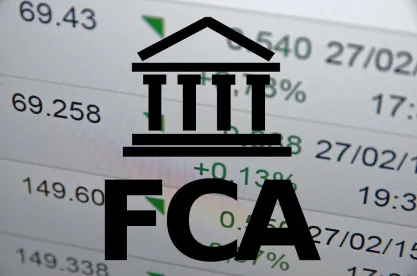In case you haven’t heard, the London Interbank Offered Rate (“LIBOR”) may be phased out by the end of 2021. Why? Because the Financial Conduct Authority (“FCA”) in the U.K. announced in July 2017 that it will stop requiring banks to report the interbank transactions that are used to calculate LIBOR.
But your bank has millions of dollars in outstanding loans that use LIBOR as the index rate for calculating the interest payable by your borrowers, and some of these loans mature after 2021. There is no need to panic; there is still time to take action to manage a smooth transition before LIBOR ceases to be published.
Add Broad Replacement Rate Terms to Your Loan Documents: So that you avoid compounding the LIBOR cessation problem, your bank’s legal counsel should develop standard replacement index rate terms that are included in all bank loan documents when originated, renewed or modified. In drafting replacement rate provisions, many banks have opted (1) not to designate a specific alternative index rate yet and (2) to provide that the bank may in its reasonable judgment select a substitute rate and margin from another recognized source or interbank quotation so long as the substitute rate and margin produce an interest rate comparable to the LIBOR rate and margin in the current loan documents and the substitute rate is readily verifiable from a published source. In answer to your question as to why you don’t designate a specific replacement index rate now, the future of LIBOR is unclear and there is not yet a comparable successor index rate that is widely accepted by the banking industry. Although not comparable to LIBOR, some banks have chosen to use the “national” prime rate as published in The Wall Street Journal as their alternative interest rate index.
Secured Overnight Financing Rate: The market and banking regulators recognize the importance of LIBOR and the impact of its cessation on banks and their customers. As a result, starting in April 2018, the Federal Reserve Bank of New York (“NY Fed”) began publishing three new reference rates based on overnight repurchase transactions secured by Treasury securities and among these rates is the Secured Overnight Financing Rate (“SOFR”). The NY Fed publishes SOFR every morning. The Alternative Reference Rates Committee (“ARRC”), which was formed by the Federal Reserve to address the LIBOR cessation issue, has identified SOFR as a potential replacement for LIBOR. Since SOFR is an overnight borrowing rate and since SOFR transactions are collateralized by Treasury securities, it is generally a lower rate than LIBOR and it is not yet considered a truly comparable substitute for LIBOR. Nonetheless, the creation of SOFR and its publication are important steps in establishing an alternative to LIBOR. There is some momentum via ARRC and other industry sources to accept SOFR as a replacement index for LIBOR. And with time, it’s expected that the market will arrive at a consensus toward using an index such as SOFR as the replacement for LIBOR. However, until that consensus is achieved, banks and their counsel will likely rely on the approaches outlined in the Broad Replacement Rate Terms paragraph above.
Inventory and Analyze Your Existing Loan Portfolio: Your bank should begin now to identify all of its LIBOR loans and analyze whether they include one of the following (a “Viable Replacement Index”): (1) the bank’s right to select a viable and enforceable replacement index rate (these would be similar to terms developed pursuant to the bank’s actions under the Broad Replacement Rate Termsparagraph above) or (2) a specific viable and enforceable replacement index rate (such a “prime” or SOFR). For any LIBOR loan that does not include a Viable Replacement Index, your bank should take advantage of any time when a borrower requests a renewal, extension, modification, waiver or concession. This will be your opportunity to amend your loan documents to add a Viable Replacement Index. In any event, before LIBOR ceases to be published, your bank should negotiate a Viable Replacement Index for any loan that will mature after the LIBOR cessation date.
Use Market Accepted When the market does accept a successor index rate to LIBOR, then your legal counsel can prepare more targeted loan provisions in new loans or modifications of existing loans that mitigate the differences between LIBOR and the successor index rate when calculating loan interest rates. The market-consensus successor index rate may be used instead of LIBOR or may be used as a replacement to LIBOR when it ceases to be published or when LIBOR is deemed to be an unreliable index by the banking industry.
The takeaways for your bank are to monitor how the cessation of LIBOR affects current and future loan transactions, to develop the Broad Replacement Rate Terms as described above and to keep abreast of market acceptance of SOFR or another index rate as the replacement for LIBOR.



 />i
/>i
